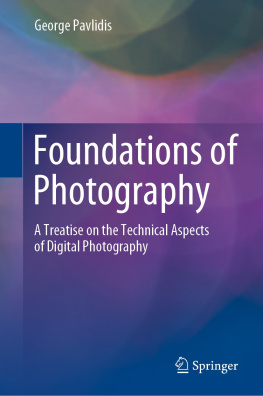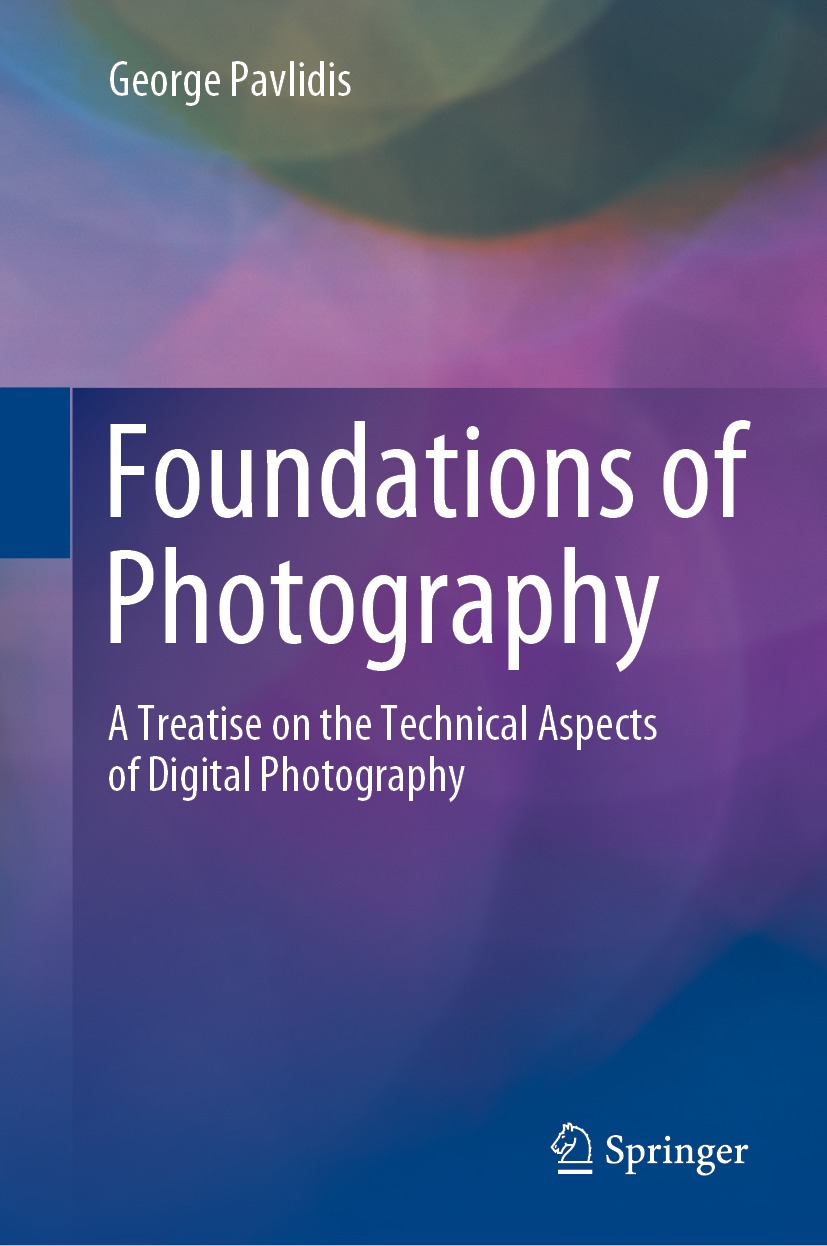George Pavlidis
Athena Research Centre, University Campus at Kimmeria, Xanthi, Greece
ISBN 978-3-031-06251-3 e-ISBN 978-3-031-06252-0
https://doi.org/10.1007/978-3-031-06252-0
The Editor(s) (if applicable) and The Author(s), under exclusive license to Springer Nature Switzerland AG 2022
This work is subject to copyright. All rights are solely and exclusively licensed by the Publisher, whether the whole or part of the material is concerned, specifically the rights of translation, reprinting, reuse of illustrations, recitation, broadcasting, reproduction on microfilms or in any other physical way, and transmission or information storage and retrieval, electronic adaptation, computer software, or by similar or dissimilar methodology now known or hereafter developed.
The use of general descriptive names, registered names, trademarks, service marks, etc. in this publication does not imply, even in the absence of a specific statement, that such names are exempt from the relevant protective laws and regulations and therefore free for general use.
The publisher, the authors, and the editors are safe to assume that the advice and information in this book are believed to be true and accurate at the date of publication. Neither the publisher nor the authors or the editors give a warranty, expressed or implied, with respect to the material contained herein or for any errors or omissions that may have been made. The publisher remains neutral with regard to jurisdictional claims in published maps and institutional affiliations.
This Springer imprint is published by the registered company Springer Nature Switzerland AG
The registered company address is: Gewerbestrasse 11, 6330 Cham, Switzerland
Preface
Any study of photography naturally relates to the study of how one may use light (Greek  originally pronounced
originally pronounced  , now simplified to fos) to write, inscribe, or create images (Greek
, now simplified to fos) to write, inscribe, or create images (Greek  pronounced
pronounced  ). fos +
). fos +  gives
gives  , the Greek word for to photograph. Light has had and continues to have a special impact on humans, in fact in everything that relates to what we perceive as life. It is what wakes us up in the morning, what warms us, and what gives us the images of the world around us. It has the power to turn a simple view at the sea into serenity and anticipation, the gaze at the forest into calmness, the glance at the sky and stars into cosmological and existential search, or the look at a loved one into joy.
, the Greek word for to photograph. Light has had and continues to have a special impact on humans, in fact in everything that relates to what we perceive as life. It is what wakes us up in the morning, what warms us, and what gives us the images of the world around us. It has the power to turn a simple view at the sea into serenity and anticipation, the gaze at the forest into calmness, the glance at the sky and stars into cosmological and existential search, or the look at a loved one into joy.
Recognising the value of light in life, humans throughout history devised ways of capturing the images created by light, while, at the same time, wondering and exploring the very nature of this magical element, sometimes using science, sometimes using logic and philosophy, and sometimes relying on feeling and superstition. What is certain is that light is a key element of the universe that is our home, exists regardless of our perception of it, and even plays a defining role in relationships within the universe.
In science, many attempts have been made to explain the nature of light, which sometimes led to theories about the particle nature, the wave nature, or the electromagnetic nature of light. The first to support a particle theory of light was a brilliant person called Newton, when in 1675 he (but also other scientists of that era) argued that light was a continuous stream of particles travelling in a straight line from a source, thus, giving a pure particle character to light. Even in the same period but also later, several great scientific minds supported a wave theory of light, attributing to it exclusively a wave nature, like the waves on the water surface. Among them were Robert Hooke (1660), Christiaan Huygens (1678), Leonhard Euler (1746), Tomas Young (early 1800), Augustin-Jean Fresnel (1817), and Simeon Denis Poisson (1820s). With the development of electromagnetic theory, scientists such as Michael Faraday (1845), James Clerk Maxwell (1862, 1873), and Heinrich Hertz paved the way towards an electromagnetic theory of light. With the advent of Einsteins theory of special relativity in 1905, the idea of a dual nature of light was first introduced, which solved the paradox of the constant speed of light, creating, in this process, another paradox that space and time are somewhat more exotic parameters of the universe. At the same time, the light appeared to play an even more important role, since first appeared as the connecting element between energy and mass, through the famous Einstein simplified equation  . In addition, the acceptance of the dual nature of light provided an elegant interpretation of the paradox of the photoelectric effect, the release of electrons from a surface when light falls upon it. In fact, it was this interpretation for which Einstein was awarded the Nobel Prize. This view was supported by scientists such as Max Planck (in 1900) with the interpretation of black body radiation, which reinforced a quantum theory of light (photons) that backed the dual nature while paving the way for the advent of quantum mechanics and quantum electrodynamics. Even to those not particularly fond of mathematics and science, the names of the aforementioned scientists sound particularly familiar and show the importance given by humans in the understanding of light, highlighting its uniqueness in the universe.
. In addition, the acceptance of the dual nature of light provided an elegant interpretation of the paradox of the photoelectric effect, the release of electrons from a surface when light falls upon it. In fact, it was this interpretation for which Einstein was awarded the Nobel Prize. This view was supported by scientists such as Max Planck (in 1900) with the interpretation of black body radiation, which reinforced a quantum theory of light (photons) that backed the dual nature while paving the way for the advent of quantum mechanics and quantum electrodynamics. Even to those not particularly fond of mathematics and science, the names of the aforementioned scientists sound particularly familiar and show the importance given by humans in the understanding of light, highlighting its uniqueness in the universe.
One might say that the study of light within subjects like photography is more related to its wave nature. As a wave, light corresponds to the known and mapped spectrum of electromagnetic radiation, since it is a carrier of energy in the universe. Apparently, the part of this spectrum that relates to photography is only a small one, the one called the visible spectrum, that is, those frequencies (or wavelengths) that are detected by the human eye. These frequencies are higher than microwaves, which are used in communication and some other technologies useful for heating, and are located between the areas defined by infrared and ultraviolet radiation. In addition, one of the characteristic properties of light that plays an important role in the study of issues related to photography is that of












 originally pronounced
originally pronounced  , now simplified to fos) to write, inscribe, or create images (Greek
, now simplified to fos) to write, inscribe, or create images (Greek  pronounced
pronounced  ). fos +
). fos +  gives
gives  , the Greek word for to photograph. Light has had and continues to have a special impact on humans, in fact in everything that relates to what we perceive as life. It is what wakes us up in the morning, what warms us, and what gives us the images of the world around us. It has the power to turn a simple view at the sea into serenity and anticipation, the gaze at the forest into calmness, the glance at the sky and stars into cosmological and existential search, or the look at a loved one into joy.
, the Greek word for to photograph. Light has had and continues to have a special impact on humans, in fact in everything that relates to what we perceive as life. It is what wakes us up in the morning, what warms us, and what gives us the images of the world around us. It has the power to turn a simple view at the sea into serenity and anticipation, the gaze at the forest into calmness, the glance at the sky and stars into cosmological and existential search, or the look at a loved one into joy. . In addition, the acceptance of the dual nature of light provided an elegant interpretation of the paradox of the photoelectric effect, the release of electrons from a surface when light falls upon it. In fact, it was this interpretation for which Einstein was awarded the Nobel Prize. This view was supported by scientists such as Max Planck (in 1900) with the interpretation of black body radiation, which reinforced a quantum theory of light (photons) that backed the dual nature while paving the way for the advent of quantum mechanics and quantum electrodynamics. Even to those not particularly fond of mathematics and science, the names of the aforementioned scientists sound particularly familiar and show the importance given by humans in the understanding of light, highlighting its uniqueness in the universe.
. In addition, the acceptance of the dual nature of light provided an elegant interpretation of the paradox of the photoelectric effect, the release of electrons from a surface when light falls upon it. In fact, it was this interpretation for which Einstein was awarded the Nobel Prize. This view was supported by scientists such as Max Planck (in 1900) with the interpretation of black body radiation, which reinforced a quantum theory of light (photons) that backed the dual nature while paving the way for the advent of quantum mechanics and quantum electrodynamics. Even to those not particularly fond of mathematics and science, the names of the aforementioned scientists sound particularly familiar and show the importance given by humans in the understanding of light, highlighting its uniqueness in the universe.